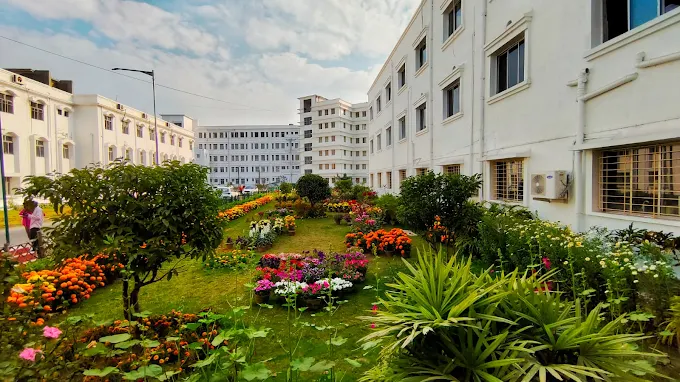
Latest Advances in Dental Technologies: Shaping the Future of Modern Dentistry
In the realm of healthcare, dentistry stands out as a field continually revolutionized by technological advancements, significantly enhancing patient care, treatment accuracy, and procedural efficiency. Haldia Institute of Dental Sciences & Research, renowned as the top private dental college in West Bengal, is at the forefront of integrating these cutting-edge technologies and techniques into its curriculum, preparing future dentists to navigate the evolving landscape of modern dentistry. Let's delve into some of the most exciting advancements that are shaping the future of dental care.
3D Printing in Dental Prosthetics
3D printing technology has been a game-changer for dental prosthetics, offering unprecedented precision, speed, and customization options. This technology enables dentists to design and produce dental restorations, including crowns, bridges, and even complete dentures, directly in the clinic, significantly reducing waiting times for patients. The ability to customize prosthetics to the minutest detail ensures a perfect fit and more natural-looking results, enhancing patient satisfaction and comfort.
Laser Dentistry
Laser technology has transformed various dental procedures, making them less invasive, more comfortable, and more effective. From the treatment of gum disease and tooth decay to teeth whitening and biopsy procedures, laser dentistry offers numerous advantages, including reduced bleeding, minimized swelling, and a lower risk of infection. Its precision allows for the preservation of more healthy tissue during procedures, promoting faster healing and reducing discomfort for patients.
Digital Impressions
Gone are the days of uncomfortable and messy traditional dental impressions. Digital impressions have revolutionized this aspect of dentistry, providing a more pleasant experience for patients and more accurate data for dentists. Using intraoral scanners, dentists can now create precise digital models of a patient's mouth in minutes. This technology not only improves the accuracy of dental restorations but also allows for seamless communication with dental laboratories, improving the efficiency of the treatment process.
Intraoral Cameras
Intraoral cameras are a pivotal diagnostic tool that allows dentists to view detailed images of the hard-to-reach areas of a patient's mouth. This technology enhances patient education, enabling dentists to show patients exactly what is happening inside their mouths and explain treatment options more effectively. Moreover, the high-resolution images captured by intraoral cameras are invaluable for accurate diagnosis, treatment planning, and monitoring the progress of dental conditions over time.
CAD/CAM Technology
Computer-Aided Design (CAD) and Computer-Aided Manufacturing (CAM) technology have significantly streamlined the fabrication process of dental restorations. Dentists can now design custom fittings like crowns, veneers, inlays, and onlays in a single visit, using CAD software, and then manufacture them on-site with CAM machines. This not only speeds up the treatment process but also improves the fit and appearance of restorations, leading to better patient outcomes.
Teledentistry
The rise of teledentistry has made dental care more accessible, allowing patients to receive consultations and follow-up care remotely. This is particularly beneficial for patients in remote areas or those with mobility issues. Teledentistry also facilitates easier collaboration among dental professionals, enhancing the quality of patient care through shared expertise.
Conclusion
The integration of these advanced technologies into dental practices is revolutionizing patient care, making treatments more efficient, less invasive, and more comfortable. At Haldia Institute of Dental Sciences & Research, the top private dental college in West Bengal, students are trained in these state-of-the-art technologies, ensuring they are well-prepared to lead the future of dentistry. As technology continues to evolve, the possibilities for improving dental care and patient experiences are boundless, promising a future where dental health is more accessible, precise, and personalized than ever before.

